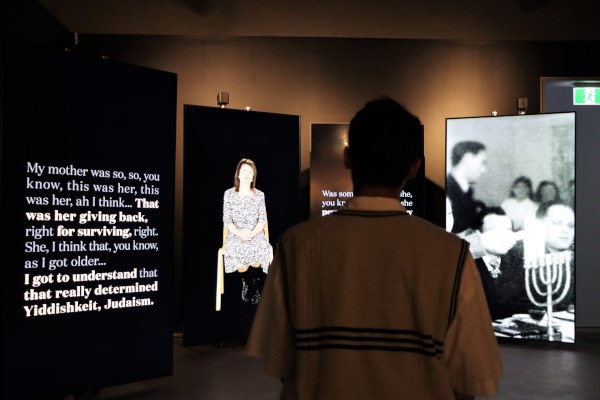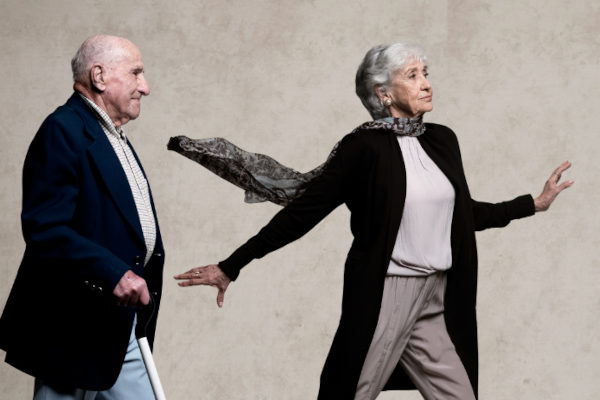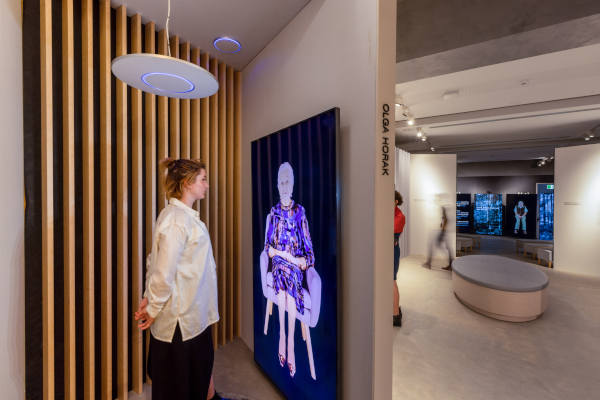The Sydney Jewish Museum recently opened its new high-tech exhibition Reverberations: A future for memory, which utilises AI technology to preserve the stories of Australian Holocaust survivors for future generations.
Visitors can intimately encounter the stories of 43 Australian Holocaust survivors at the exhibition, while exploring an immersive gallery of high-definition footage. They can also have one-on-one “conversations” with three life-like interactive Holocaust survivor biographies, that use AI to respond to whatever questions you ask them.
You can ask these digitised survivor biographies anything – including that of the Eddie Jaku, author of ‘The Happiest Man on Earth’ – from their experiences in the Holocaust, to their lives after the war, their beliefs, likes, dislikes and even their messages to future generations. It feels like there’s a real survivor sitting in front of you.
We interviewed Senior Curator, Shannon Biederman, to learn more about Reverberations, from its origins to its future implications, and gain a better understanding of the purpose and importance of this milestone exhibition.

How did the concept for Reverberations come to life?
“The Sydney Jewish Museum was founded 30 years ago by the generation of Holocaust survivors who made new lives in Sydney after the war. Over many years, we have have documented and recorded thousands of Holocaust survivor testimonies. With the advent of high-definition cameras and new filming techniques, the museum has created an extraordinary archive of material that we hoped would one day form the basis of a high-tech testimony exhibition like this one.
"This exhibition has been many years in the making. It’s very special in that it pays homage to the survivors who founded this institution and to those who continue to share their stories. It was essential to have this milestone exhibition now, while the survivors are able to give feedback on how we use their testimony, to make sure that this next link in the chain of memory is strong.”
What is the purpose of Reverberations?
“Reverberations is not an exhibition focussed on the events of the Holocaust – it’s about the people who experienced it – and the painful decision they make each time they choose to relive stories of unimaginable loss for the betterment of humanity. It’s a reflection on the role of memory in society, its significance and how it helps us understand the past and how it shapes our present. People don’t often realise how much of the past is with us and how much historical events shape contemporary society.
"The other purpose is to experiment with the transmission of memory through technology. We know that hearing firsthand from a Holocaust survivor is an authentic moment of meeting history that lasts a lifetime. While no technology can ever replace this experience, can we use it to continue to make a meaningful impact on our visitors, so future generations don’t miss out on this incredible experience.”
Can AI truly preserve the ability to have a conversation with a Holocaust survivor?
“The technology behind our interactive biographies comes from the USC Shoah Foundation in the US. It uses a combination of artificial intelligence and sophisticated language processing, to create an experience similar to talking to a Holocaust survivor. This technology still has a way to go but I am optimistic that it has a lot of potential.
"I don’t think talking to a digitised version of a person will ever be the same as a human connection.
Yet, from what I see so far, interacting with it offers an incredibly moving and meaningful experience of its own. I think one of the best things about these interviews is the breadth, so it really allows people to discuss topics that interest them.”
What will visitors come away from this exhibition thinking and feeling?
“This exhibition offers visitors an opportunity for reflection, which is so important but hard to come by in our busy world. It allows an opportunity to see how history impacts contemporary society and to better understand the Jewish community. Despite being highly technological, it’s really an exhibition about humanity. Parts will make you cry while others laugh out loud. It is a meaningful experience that stays with you.”
Why is it important to keep the stories of Holocaust survivors alive?
“Our community of Holocaust survivors live with the constant trauma of what they went through. Telling their stories to visitors, especially children, is often very painful but they choose to endure this pain in the hope that listeners will learn to stand up for peace, kindness and humanity.
"It was the choices, big and small, of individuals that led to the Holocaust. By sharing their experiences, survivors encourage us to think more critically about our role in society, in the hope that we might make the world a better place.”







